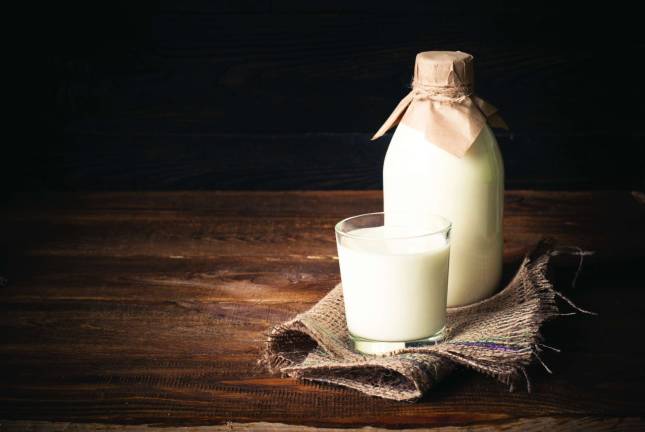Almond versus cow’s milk

Which is better for you?
What you won’t see on a Got Milk commercial
Ah, childhood memories of our weekly outing to T&W’s in Ridgewood, NJ. Mint chip was a favorite for Grandmother and me. I loved looking at all of the colors and textures of the icy, creamy treats in the glass case. As I got older, I was sure to purchase organic milk, believing this was a good choice. After all, dairy is an important part of a healthy diet, right?
I started re-examining our diets after my son began suffering from chronic ear infections. Removing dairy was part of the regimen that ultimately enabled me to cancel his ear tube surgery. Looking further, I found more than I’d expected.
Myth: We need milk to maintain bone density.
Fact: Cow’s milk is highly acidic. To maintain our delicate pH, our bodies use alkalizing minerals to bring us back into a slightly alkaline state. Where does the body store these minerals? That’s right – in our bones. Once released into the bloodstream, calcium gets flushed with our urine, so dairy actually contributes to a net loss of calcium, which explains why countries with the lowest dairy intake have the lowest rates of osteoporosis, and vice versa. We absorb calcium much more readily from green vegetables than we do from milk.
Myth: Children need milk for proper growth and development.
Fact: Milk consumption is linked to allergies, acne, asthma, constipation and type I diabetes in children. Infants who are given milk or breastfed by mothers who drink milk are more prone to colic.
Myth: Dairy sensitivities just cause stomachaches.
Fact: Sensitivity to the milk protein casein can cause acne, eczema, psoriasis, inflammation, and headaches. Everyone I’ve known who’s had eczema and has eliminated dairy has seen a dramatic improvement.
Myth: Organic milk does not contain hormones.
Fact: Since dairy cows are kept pregnant or lactating, even organic milk is chock full of naturally occurring sex hormones, like estrogens that are linked to lowered testosterone and enlarged breasts in men, and several types of cancer.
Since my family stopped drinking milk, we’ve discovered a world of non-dairy: almond, cashew, rice, hemp, flax, coconut. Look for unsweetened varieties with fewer ingredients.
As for the FDA’s three-cups-a-day milk recommendation? I disagree, based on science, not commercials.
Lisa Y. Mitchell, owner of Down 2 Earth in Florida, NY
A household staple for good reason
Cow’s milk has been a household staple since the days when it was delivered right to your front door. It’s naturally rich in minerals, including calcium, phosphorous, and many vitamins. In terms of macronutrients, cow’s milk is a good source of protein, and only contains natural sugar. It’s available in various ranges of fat (whole, reduced fat and skim milk) which all have different calorie levels. For these reasons, cow’s milk is very versatile and can remain an appropriate beverage of choice throughout the lifespan.
As a pediatric dietitian, I am often confronted by parents with questions about this topic. “Does my child really need milk from a cow?” or “I drink coconut milk. When can my child drink that too?”
Unless there are any contraindications between the ages of one and two years, if the child is not breastfeeding, then whole milk is the recommendation, offering the much needed fat and calories for this developing age. After age two, parents may wean to a reduced or lower fat milk. When it comes to kids, cow’s milk helps provide much needed nutrition during this transitional time.
That being said, cow’s milk is certainly not for everyone – especially those with allergies or intolerances. Other “milks” on the market include soy, almond, rice, hemp, coconut, cashew, combinations of these, and more.
So let’s say you’re looking for a lower calorie milk alternative, as many of these products are often touted to be. Unsweetened almond milk only has about 30 calories per cup, but with this calorie decrease, the main macronutrient, protein, is sacrificed. These milk alternatives all have higher or equal grams of fat per serving and almost across the board, have decreased protein. It is important to note that plain cow’s milk has no sugar added—all the sugar is in the form of lactose, which is naturally occurring. Milk alternatives have varying levels of sugar: from 0 to upwards of 15 grams (especially if they are flavored). What cow’s milk naturally provides in terms of minerals and vitamins, alternatives are often fortified with, and in varying amounts.
So do your research before deciding whether to make the switch. Old-fashioned cow’s milk may be your best bet after all.
Sarah Camposeo, RD, grew up in Goshen and is a pediatric dietitian in New Haven, CT